|
Das
Breitmaulnashorn
(wissenschaftlich Ceratotherium
simum) ist eine der beiden Arten von Nashörnern, die heute noch
existieren. Es ist auch bekannt als
Weißes Nashorn, obwohl
der Name "weiß" eigentlich von einer falschen Übersetzung des
niederländischen Wortes "wijde"
stammt, was "breit" bedeutet und sich auf seine breitere Maulform
bezieht.
Merkmale des Breitmaulnashorns:
-
Größe und Gewicht:
Das Breitmaulnashorn ist das
größte lebende Nashorn und kann eine
Länge von 3,5 bis 4 Metern
erreichen. Männliche Breitmaulnashörner wiegen zwischen 2.300 und
3.500 kg, während weibliche Tiere tendenziell etwas leichter sind.
-
Kopf und Maul: Das
markanteste Merkmal des Breitmaulnashorns ist sein
breites Maul, das
sich hervorragend für das Grasen von Gras auf offenen Ebenen eignet.
Im Gegensatz zum
Spitzmaulnashorn, das ein schmaleres Maul hat und eher
Sträucher frisst, frisst das Breitmaulnashorn hauptsächlich
Gräser.
-
Haut: Die Haut des
Breitmaulnashorns ist dick und faltig, wobei sie in der Regel grau
ist, obwohl sie durch Staub oder Erde auch braun oder grünlich
erscheinen kann. Diese dicke Haut schützt das Nashorn vor
Insekten und
Sonnenbrand.
Lebensraum und Verbreitung:
- Das Breitmaulnashorn ist
hauptsächlich in den
Savannen und
Graslandschaften des südlichen und östlichen
Afrikas zu
finden. Es lebt vor allem in
Südafrika,
Namibia,
Botswana und
Zimbabwe.
- Früher war das
Verbreitungsgebiet des Breitmaulnashorns viel größer, aber durch
Lebensraumverlust,
Wilderei und
andere Bedrohungen wurde seine Population auf einige wenige Gebiete
reduziert.
Ernährung:
- Das Breitmaulnashorn ist ein
Pflanzenfresser
und verbringt den größten Teil des Tages mit
Grasen. Es
bevorzugt Gräser,
insbesondere lange Grasarten, und frisst bis zu
100 kg Gras pro Tag.
- Es frisst vor allem im
Morgen und
späten Nachmittag,
wenn die Temperaturen kühler sind.
Verhalten:
- Breitmaulnashörner sind im
Allgemeinen solitär,
besonders die Männchen. Weibchen leben oft in kleinen Gruppen mit
ihren Kälbern. Diese Tiere sind
territorial,
wobei die Männchen ein großes Gebiet beanspruchen, das sie aktiv
verteidigen, insbesondere gegenüber anderen Männchen.
- Sie sind auch
sehr gut angepasst
an das Leben in heißen, trockenen Klimazonen und nutzen
Wasserlöcher und
Schlammlöcher, um
sich abzukühlen und ihre Haut zu schützen.
Fortpflanzung:
- Die
Trächtigkeitsdauer
bei Breitmaulnashörnern beträgt etwa
16 Monate, was
eine der längsten Trächtigkeitszeiten bei Landtieren ist.
- In der Regel wird ein
einzelnes Kalb geboren, das bei der Geburt etwa
40 kg wiegt.
Kälber bleiben etwa 3 bis
4 Jahre bei ihrer Mutter, wobei sie langsam die Fähigkeiten
erwerben, sich in der Wildnis selbst zu versorgen.
Bedrohungen und Schutzstatus:
- Das Breitmaulnashorn ist heute
vom Internationalen
Verband für Naturschutz (IUCN) als
„gering gefährdet“
eingestuft, wobei der Bestand in den letzten Jahren durch intensive
Schutzmaßnahmen stabilisiert wurde. Trotzdem gibt es immer noch
große Bedrohungen,
insbesondere durch
Wilderei und die illegale Jagd auf Nashornhörner, die auf
dem Schwarzmarkt sehr teuer sind.
-
Naturschutzgebiete
und Schutzprogramme
in Ländern wie Südafrika und Namibia haben jedoch dazu beigetragen,
die Population zu stabilisieren. Es gibt auch
Zuchtprogramme in
Gefangenschaft, die die Art erhalten sollen.
Fazit:
Das Breitmaulnashorn ist ein beeindruckendes Tier und ein Symbol für den
Erhaltungswandel in
Afrika. Obwohl es immer noch Gefahren durch
Wilderei und
Lebensraumverlust
ausgesetzt ist, gibt es weltweit Anstrengungen, den Bestand dieser
majestätischen Tiere zu erhalten und zu schützen.
|
The Breitmaulnashorn (German
for White Rhinoceros, scientific name: Ceratotherium
simum) is one of the largest and most iconic mammals in Africa.
Known for its broad, square-shaped mouth (which gives it its name), the
white rhino is a conservation success story, though it still faces
significant threats. Here’s everything you need to know about this
magnificent animal:
About the White Rhinoceros
-
Appearance:
-
The white rhino is the largest of the five
rhino species, weighing between 1,800–2,500
kg (4,000–5,500 lbs) and standing 1.5–1.8
meters (5–6 feet) tall at the shoulder.
-
It has a broad, square-shaped mouth adapted
for grazing on grass.
-
Its skin is thick and gray, with two prominent horns on its
snout. The front horn is longer, averaging 60–150
cm (24–59 inches).
-
Habitat:
-
Behavior:
-
White rhinos are social animals,
often seen in groups called crashes,
which can include up to 14 individuals.
-
They are primarily diurnal,
feeding during the day and resting at night.
-
Despite their size, they can run at speeds of up to 40
km/h (25 mph).
-
Diet:
-
Reproduction:
Subspecies of White Rhino
There are two subspecies of white rhino:
-
Southern White Rhino (Ceratotherium simum simum):
-
Found primarily in South Africa,
with smaller populations in Namibia, Zimbabwe, Kenya, and
Botswana.
-
This subspecies has made a remarkable recovery from near
extinction in the early 20th century, with current populations
estimated at over 15,000.
-
Northern White Rhino (Ceratotherium simum cottoni):
-
Once found in parts of Central Africa, this subspecies is now critically
endangered.
-
As of 2023, only two females remain,
making it functionally extinct in the wild. Conservation efforts
are focused on assisted reproduction techniques to save the
subspecies.
Conservation Status
-
Threats:
-
Poaching: White rhinos are heavily targeted for
their horns, which are illegally traded for use in traditional
medicine and as status symbols.
-
Habitat Loss: Expanding human settlements and
agriculture reduce available habitat.
-
Climate Change: Changes in rainfall patterns
and droughts can affect food and water availability.
-
Conservation Efforts:
-
Anti-Poaching Measures: Increased patrols,
drones, and community involvement help protect rhinos.
-
Habitat Protection: National parks and reserves
provide safe habitats for rhinos.
-
Breeding Programs: Captive breeding and
assisted reproduction aim to boost populations, especially for
the northern white rhino.
Interesting Facts
-
The name "white rhino" is a mistranslation of the Dutch word "wijd" (meaning
"wide"), referring to its broad mouth.
-
White rhinos have poor eyesight but excellent hearing and smell.
-
They play a crucial role in their ecosystems by maintaining
grasslands through grazing.
Where to See White Rhinos
-
South Africa:
-
Namibia:
-
Kenya:
How You Can Help
-
Support conservation organizations like the World
Wildlife Fund (WWF) and Save
the Rhino International.
-
Avoid purchasing products made from rhino horn or other wildlife
parts.
-
Spread awareness about the importance of rhino conservation.
The white rhino is a symbol of resilience and the importance of
conservation. If you’re planning a safari or want to learn more about
these incredible animals, let me know!
|
 Safaris
Bergsteigen
Wandern
Inselwandern Weltweit
Safaris
Bergsteigen
Wandern
Inselwandern Weltweit
 Europa
Inselwandern
Europa
Inselwandern
 Städtewandern
Städtewandern
 Paintings
Paintings Dirk Rauschenbach
Dirk Rauschenbach
 Safaris
Bergsteigen
Wandern
Inselwandern Weltweit
Safaris
Bergsteigen
Wandern
Inselwandern Weltweit
 Europa
Inselwandern
Europa
Inselwandern
 Städtewandern
Städtewandern
 Paintings
Paintings Dirk Rauschenbach
Dirk Rauschenbach
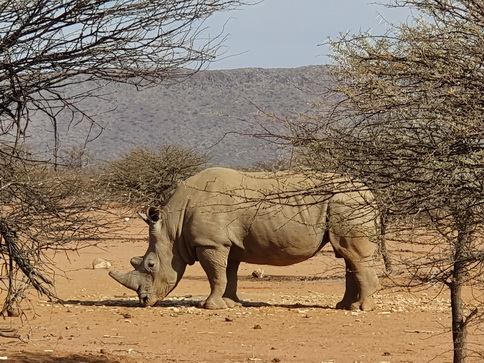
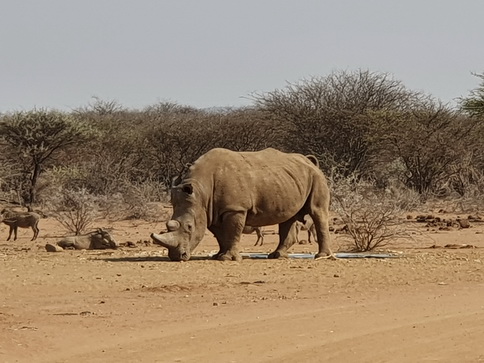
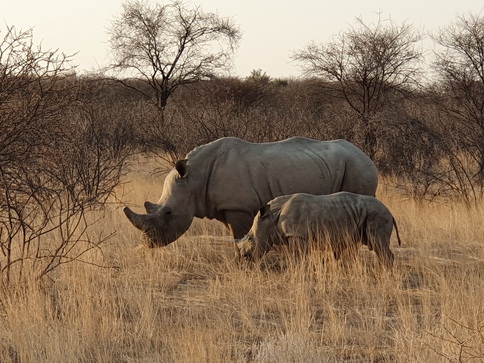

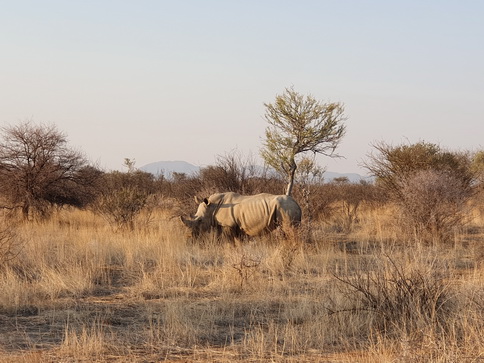

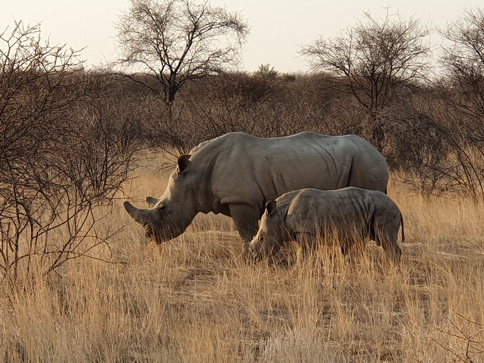
![]() 26.07.25 Copyright Dirk
Rauschenbach Koelnerstrasse 293 51702 Bergneustadt
Datenschutzerklaerung 02261 9788972 Mail ccooly(
at) web.de
26.07.25 Copyright Dirk
Rauschenbach Koelnerstrasse 293 51702 Bergneustadt
Datenschutzerklaerung 02261 9788972 Mail ccooly(
at) web.de